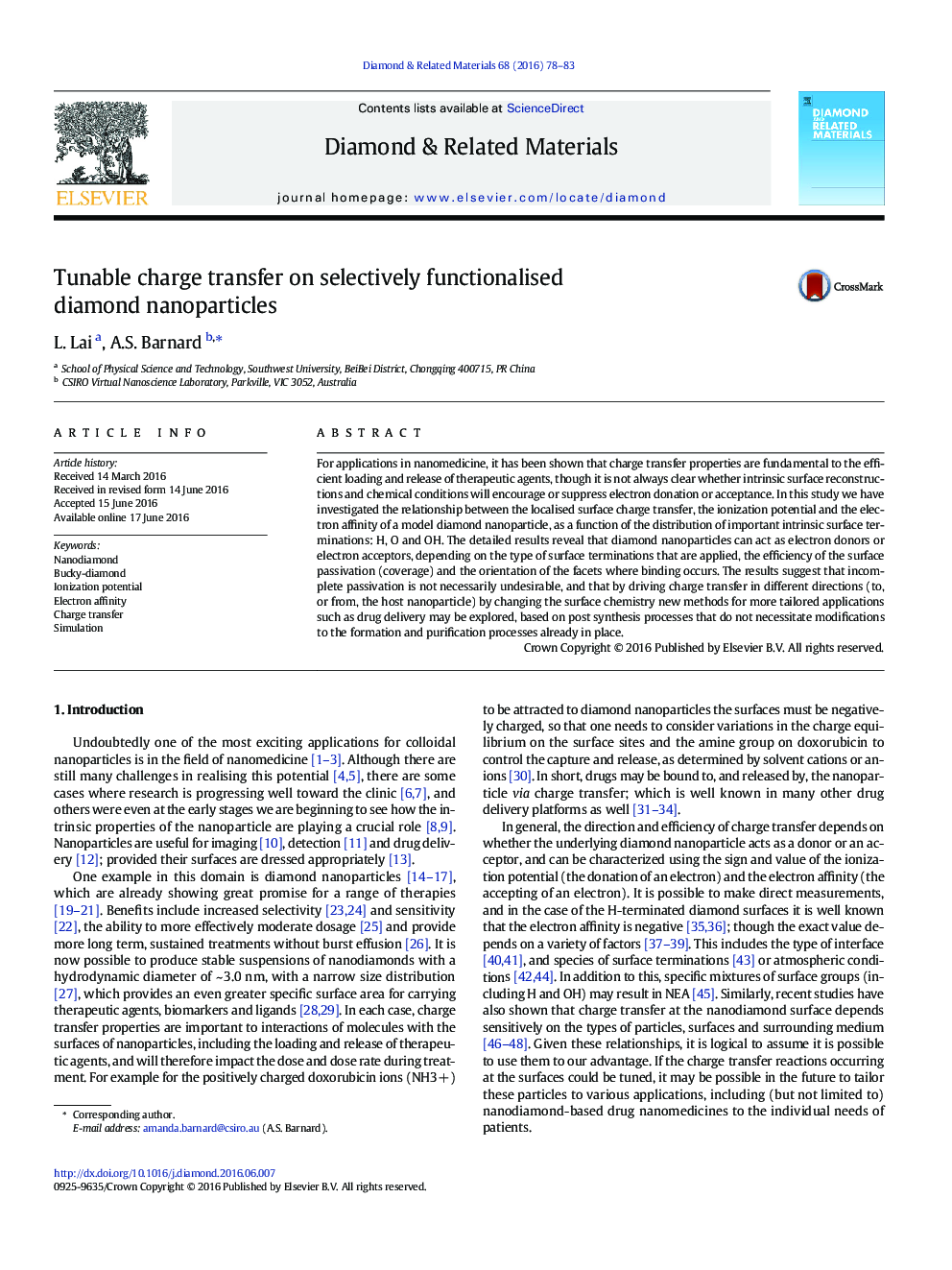| Article ID | Journal | Published Year | Pages | File Type |
|---|---|---|---|---|
| 701493 | Diamond and Related Materials | 2016 | 6 Pages |
•Nanodiamond surfaces can be donors or acceptors, depending on the degree of passivation•Charges are not evenly distributed across the facets of nanodiamond•Selective passivation of nanodiamond facets may provide new opportunities
For applications in nanomedicine, it has been shown that charge transfer properties are fundamental to the efficient loading and release of therapeutic agents, though it is not always clear whether intrinsic surface reconstructions and chemical conditions will encourage or suppress electron donation or acceptance. In this study we have investigated the relationship between the localised surface charge transfer, the ionization potential and the electron affinity of a model diamond nanoparticle, as a function of the distribution of important intrinsic surface terminations: H, O and OH. The detailed results reveal that diamond nanoparticles can act as electron donors or electron acceptors, depending on the type of surface terminations that are applied, the efficiency of the surface passivation (coverage) and the orientation of the facets where binding occurs. The results suggest that incomplete passivation is not necessarily undesirable, and that by driving charge transfer in different directions (to, or from, the host nanoparticle) by changing the surface chemistry new methods for more tailored applications such as drug delivery may be explored, based on post synthesis processes that do not necessitate modifications to the formation and purification processes already in place.
Graphical abstractFigure optionsDownload full-size imageDownload as PowerPoint slide
